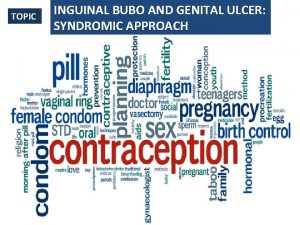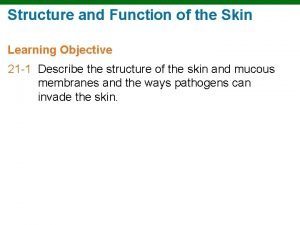Increasing Chlamydia Trachomatis and Neisseria Gonorrhea Screening among

- Slides: 1

Increasing Chlamydia Trachomatis and Neisseria Gonorrhea Screening among Women 15 to 24 Years Old Using a Multifaceted Approach Mackenzie S. Shireman, MSN, RN, NP-C Valparaiso University DNP Student Background & Significance Evidence Appraisal • • Level: John Hopkins Nursing Evidence-Based Practice Research Appraisal Tool • Quality: John Hopkins Nursing Evidence-Based Practice Research Appraisal Tool • • People 15 to 24 years old account for half of the 20 million STDs diagnosed annually (CDC, 2017 a) Chlamydia trachomatis (CT) and Neisseria gonorrhea (NG) are the most common reportable STDs (CDC, 2018) Screening is under performed with national rates 50 -60% per HEDIS (NCQA, 2019) • • Providers at project site are not screening and offering testing consistently USPSTF (2014) and CDC (2014 c) recommend screening sexually active females <25 -years-old annually for CT and NG Evaluation Evidence Level Articles Included Design Quality I 4 Randomized Controlled Trial (4) A (1) B (3) Pre- and Post-Intervention Sexual History Taking, Eligibility, and Testing (%) Screened for Sexual Activity Eligible for Testing II 3 Quality Improvement A (2) B (1) Meta Analysis of Mixed Methods (1) III 1 Systematic Review of Mixed Methods PICOT Question • Among sexually active, nonpregnant females 15 to 24 years old (P), how does colleague education, routine sexual history taking, and subsequent collection of urine specimen for sexually active women (I) compared to no standard practice (C) improve CT and NG screening uptake (O) over a 10 -week period (T)? A Evidence Based Recommendations Literature Review • Key terms: “sexually transmitted disease*”, “sexually transmitted infection*”, STD, STI, screen*, test*, “urine”, “young adult”, teen*, adolescen*, chlamydia, “chlamydia trachomatis”, gonorrhea, “neisseria gonorrhea”, “primary care”, “internal medicine”, “general practice”, “family medicine”, and “emergency department” • Limiters: 2009 -2019, English language, peer-reviewed • Inclusion criteria: chlamydia and/or gonorrhea screening/testing, women, outpatient office setting, emergency department setting • Exclusion criteria: special populations such as sex workers or college students, chlamydia and/or gonorrhea treatment, STDs other than chlamydia and/or gonorrhea Database Yielded Evidence Duplicates Abstracts Reviewed Evidence Selected Cochrane 166 2 7 2 CINAHL 48 0 8 2 Hand Searched - - 3 1 Citation Chased - - 3 3 Total 220 2 21 8 • • Tested 0 10 20 Pre-Intervention 30 40 50 60 70 80 90 100 Post-Intervention Colleague education and involvement Routine screening and recommending testing Automatic collection/testing of specimens EMR reminders for providers Implementation • • • Setting: Family Practice clinic in Northern IN Participants: Nonpregnant, sexually active females 15 to 24 years old presenting for preventive and/or contraceptive related visits (n=14) Comparison: 10 -weeks pre-intervention (n=18) Intervention: • 30 -minute colleague in-service • Chart preparation sheet updated to solidify practice change • Screening for sexual activity at preventive and/or contraceptive related visits • Recommending urine test for CT/NG if patient is or has been sexually active Timeframe: 10 weeks Evidence-Based Practice Model: Dr. Kathleen Stevens’ ACE Star Model Outcomes • • • Descriptive Statistics and Chi-Square Test of Independence Demographics: • Age range • Insurance • Race • Marital status Screened for sexual activity Eligible for CT/NG testing based on sexual activity Tested for CT/NG Positive result(s) CT/NG Conclusion/Recommendations • Implementation of colleague education and routine sexual history taking to increase CT/NG screening among women 15 to 24 years old did not yield significance • Of patients eligible for testing based on sexual activity in the postintervention group, none declined • Future EBP projects with a longer timeframe and/or larger sample size would further explore significance of the multifaceted intervention • Nonpregnant, sexually active women ages 15 to 24 years old should continue to be screened for sexual activity and offered CT/NG testing as indicated in alignment with USPSTF and CDC clinical guidelines • Barriers regarding screening for sexual activity and thus CT/NG testing should be investigated in order to better facilitate standard of care Acknowledgments: Dr. Christina Cavinder, DNP, RN, CPNP-PC, Faculty Advisor; Dr. Daniel Berger, MD, Collaborating Physician; Jenelle Sloop, RN, Practice Manager, Site Facilitator

